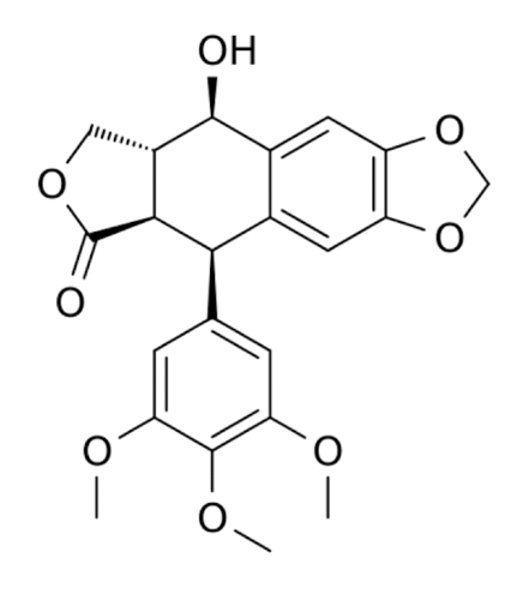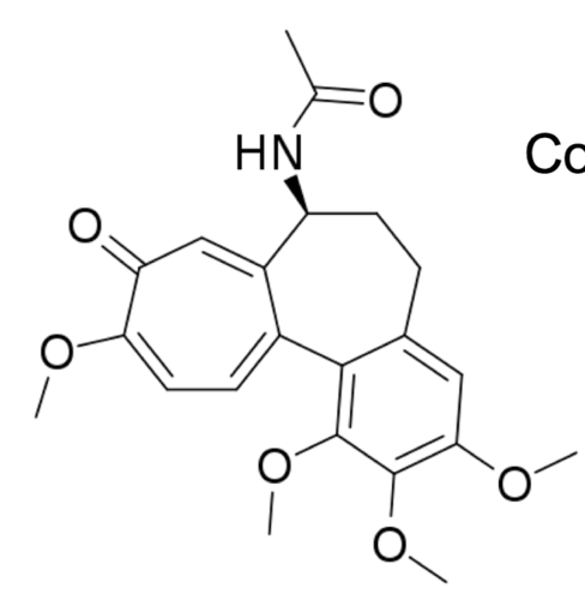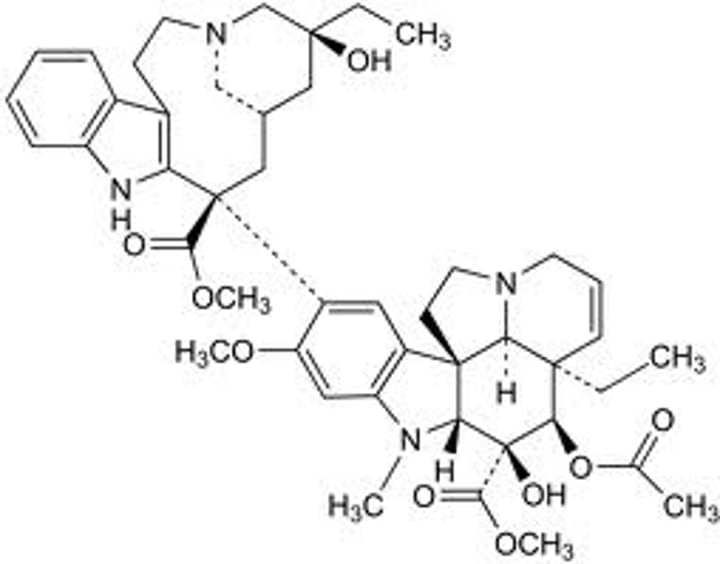BOT 380 FULL YEAR
1/752
There's no tags or description
Looks like no tags are added yet.
Name | Mastery | Learn | Test | Matching | Spaced |
|---|
No study sessions yet.
753 Terms
cancer
- rapid and uncontrolled formation and growth of abnormal cells in the body
carcinogen
- cancer-causing substance, nicotine (Tobacco leaves, Tannins)
may apple (Podophyllum peltatum)
- root extract useful for treating skin cancers
may apple - active ingredient
- aliphatic alkaloids and podophyllin
- podophyllotoxin and alpha-peltatin
podophyllotoxin
- destabilizes microtubules and prevents cell division and DNA replication
- treat HPV
- derivatives used to treat cancer
- embryotoxic

autumn crocus (Colchicuma autumnale)
- extracts inhibit cell division
- contains colchicine ALKALOID
-disrupts spindle formation during mitosis
colchicine
- alkaloid
- inhibits mitosis
- disrupts microtubules
- treat Gout
- derivatives used to cancer
- narrow therapeutic index
- can damage bone marrow

red clover (Trifolium pratense)
- contains isoflavone genistein as an antioxidant
- evidence for effectiveness against breast cancer
-Salve made from the flowers
Pacific yew (Taxus brevifolia)
- contains taxol (paclitaxel)
- shade tree in temperate rainforest
-gymnosperm
-Endemic to pacific coastal rainforests of the mountains
taxine
- toxic alkaloid mixture, made of 7+ alkaloids
English yew (Taxus baccata)
- wood historically used for axe handles and bows
- second oldest tree on the planet
-Economic use in Europe
genus Taxus
- evergreen shrubs
- contain taxine
taxol (paclitaxel)
- alkaloid
- active anti-cancer agent
- not an ingredient in taxine
- concentrated in the bark (2g in 15kg of bark)
- hydrophobic so IV delivery is difficult
taxol - mechanism
- M phase of the cell cycle, blocks replication
- binds to microtubules and prevents spindle disassembly
- interrupts cell cycle (anaphase/telophase) and growth is stopped
taxol analogues
- may be more effective than taxol
not cost effective
Very hydrophobic normally- analogues can improve water solubility
Taxol supply problems
treatment = 2g
requires 15kg of bark
would need 25000kg of bark to meet demand
Madagascar periwinkle (Catharanthus roseus)
- traditionally used for wasp stings, stop bleeding, eyewash, adn diabetes treatment
not traditional anti cancer
- extracts (vinblastine and vincristine) inhibits leukemia
vinblastine and vincristine
- anti-cancer
- treat acute lymphoblastic leukemia
- help with Hodgkin's

vinblastine and vincristine - mechanism
- during M phase
- block microtubule assembly during prophase
Spindle does not form, mitosis is arrested; cell replication is inhibited
bloodroot (Sanguinaria canadensis)
- traditionally used sap to treat breast cancer
- used in conjunction with surgery to treat skin cancers
- contains sanguinarine (Alkaloid)
sanguinarine
- alkaloid
- used to treat skin cancer
- used in oral rinses and toothpastes- antimicrobial uses
1800s-1900s
- purification of plant compounds
- synthesis of compound in labs
- medicine turns away from herbs and towards technology
1970s-now
- understanding of biochemical pathways
- genes start being cloned
- genomics comes of age
- synthetic biology begins to unravel pathways
biosynthesis of taxol
- MEP pathway and alpha-phenylalanine both have separate pathways
Philippines is a biodiversity hotspot
Mega Diverse- 5000+ endemic species and borders marine
Estimated 13 500 plant species, with 3 500 of them as indigenous to the region
• Mostly tropical or subtropical forests, mountainous regions
Ethnocultural diversity
Approximately 110 major Indigenous groups in the Philippines, with around 150 languages
Drug use policy
Former president Rodrigo Duterte
Extrajudicial killing allowed if death was resulted to drug dispersal and use
Cannabis possession: 12-20 years <300g
What is ethnobotany
Relies on indigenously- informed plant identification, foraging, and cultivation in use as food, medicine and shelter
• Approximately 25% of drugs in conventional medication have been associated in some way with plant products
Babaylans
Were second only in command to the datus (regional chieftains) during pre-colonial times
• Role came through spiritual possession, had a spirit familiar
• Functioned as warriors, healers, record keepers, priestesses, and sages
• Generally female, but transgender, male or non- binary babaylans existed
• Were ostracized post- Spanish colonization
Albularyos
Adapted from the Spanish term herbolario
• Contemporary to Babaylans
Albularyos
• General practitioner, counsellor
• Cupping, herbal concoctions, bone alignment, etc.
• Mostly present in rural areas
Indigenously informed traditional medicine
• Surveys constructed to quantify and record traditional knowledge of medicinal plants
Contemporary Filipino traditional medicine
interest in traditional medicine has persisted for several reasons
– Local knowledge
– Availability of resources
– Anecdotal evidence
– Distrust of modern healthcare
Philippines income inequality
As there is no universal healthcare in the Philippines, a single trip to the doctor can cost between P500-1500
Health care not accessible
1 traditional, complementary, or alternative medicine (TCAM) health practitioner for every 300 Filipinos
• 1 doctor to >26, 000 Filipinos
Medication in the Philippines is not financially accessible
Over 80% of commonly prescribed medications cost more than a single day’s income of the lowest paid government worker
The widespread use of traditional medicines
Despite the income disparity,rural and urban communities both rely on traditional medicine
Flora de Filipinas
A landmark botanical atlas illustrating Filipino medicinal plants in detail along with their uses
– Also included folklore insights
Tungkod Pari: A plant of war
Ti plant, Cordyline fruticosa: roots were harvested for diarrhea treatment
– In folklore: the Ifugao tribe planted these near rice plantations to drive evil spirits away and for ritualistic use
Duhat: A sweet treat
Java Plum, Syzygium jambolanum: leaves can be smoked as a tobacco alternative, wounds can cleaned with bark reduction
– In folklore: trees are hiding places of Engkanto (Elves), and Pugots
– Java plums were part of offerings to Mandurugos (Filipino shapeshifting vampires) so they would not harm a family
regulates blood sugar levels
Tuli
Tuli: a male rite of passage
– Traditionally performed by a manunuli, boys around 8-12 years old undergo a dorsal slit circumcision
– Boys are told to chew bayabas (Psidium guajava, guava) leaves during the procedure, with the chewed mixture applied afterwards to stop the bleeding
Bayabas antioxidant- leaf of guava plant
Antioxidants interact with free radicals that are produced during oxidation: these compounds are found in guava leaves
• Quercetin acts as a spasmolytic and as an antioxidant
• Rutin exhibits high free radical scavenging activity
Bayabas as an antimicrobial
Guava leaves have polyphenols that have been shown to inhibit various microorganisms
– Tanninscanchelate extracellular iron, pass through bacterial cell walls and interfere with metabolism, disrupt cell membranes and inhibit cell wall synthesis
– Phenolshavebeenshownto interfere with ergosterol, a component of fungal cell walls
Why Bayabas is an effective antimicrobial
Bacteria generally exist in biofilms
– Bacterial biofilms are more resistant to treatment
• Guava leaf extract has been shown to disrupt quorum sensing- dependent biofilms growth
– alpha-copaene binds CviR
Bayabas in wound healing
Antioxidants quench free radicals incurred by damaged cells and promote angiogenesis
• Triterpenes facilitate wound closing by inhibition of proinflammatory components such as interleukin-6 (IL-6) and upregulating anti- inflammatory cytokines like interleukin-10 (IL-10)
The NIRPROMP prompt
The National Integrated Research Program on Medicinal Plants (NIRPROMP) was established in 1974 as a collaboration between the University of the Philippines Manila (UPM) and the Department of Science and Technology (DOST) government branch
– Goals:
• Discover new (and substitute) drugs
from plants
• Develop drugs in various dosages to establish an autonomous Filipino pharmaceutical industry
• Generate new sources of revenue via cash crops
Dr. Nelia Cortes-Maramba
Faced backlash
NIRPROMP continued to examine the medical plants
identified for
– safety,
– efficacy,
– quality,
– availability of raw material,
– and propagation studies of the raw herbs
• After investigation into all 480 plants, 10 were chosen to focus on
Lagundi
Selected for further investigation as respiratory illness was identified as one of the symptoms in the Filipino population that would be easiest to treat
• Identified four main bioactive components
Initial lagundi bioactive identification
Leaf extracts identified chrysoplenol-D, casticin, luteolin, isoorientin as bioactive components
– Compounds were found to work synergistically together, and performed weakly alone
Lagundi as an antitussive
Flavonoids:
– Chrysoplenol-D: muscle relaxant
– casticin, luteolin, isoorientin that function as anti- histamines
• Leukotrieneinhibitors • Lagundinin: a recently
discovered iridoid
– A deterrent involved with plant defense
Lagundi as a mucolytic and bronchodilator
Flavonoids bind to polymers and fibrins to dissolve sticky mucus in the lungs
• Bronchodilation occurs via the inhibition of
phosphodiesterase and calcium channels by flavonoids and tannins
– Extracts also show mast cell stabilization and antieosinophilic activity
Lagundi Clinical trials
1980s clinical studies ensued
– 119 participants that had a cough were screened and given either lagundi or a placebo
– Patients improved with lagundi without side effects
The lagundi tablet
1993: NIRPROMP develops a
tablet
– Leaves are dried and processed into a tablet form
• 1995: The Department of Health releases a list of officially endorsed medicinal plants: the ten promising plant pupils
• 1996: The Bureau of Food and Drugs approves lagundi tablets for commercial production as medicinal tablets for cough, cold, and asthma
Lagundi backlash
Healthcare professionals were hesitant to endorse lagundi despite clinical evidence
The lagundi cough syrup
1999: developed a cough syrup through decoction of leaves
• Now the second most popular cough medication in the Philippines
• Many offshoots from different companies now
Information Transfer Act (2009)
Technology developed with government funds must be completely transferred to establishments like universities to evolve the work into useful products and services
• The Government then formally transferred the lagundi cough syrup to UPM for future R&D, licensing and commercialization
• This act allowed the University to attain 60% of royalties from developed products (as compared to 40% before the act) and 40% for the government
What does the pharmacy market look like
today?
Filipinos are paying
– x4 more for generic drugs and
– up to 22x more for branded products compared to international reference prices established by the World Health Organization
Biopiracy
Biopiracy: exploitation of indigenous resources for commercialization without due acknowledgement of source materials
• The Philippines loses approximately 8.1 Million USD annually in royalties for a single pharmaceutical product derived from Philippine genetic resources that was patented by a foreign company
Bitter gourd Ampalaya
mixture patented by New Jersey pharmaceutical company to treat diabetes
• Research into developing new drugs from plants is slow, not well funded
Traditional and Alternative Medicine Act
10 patented herbal medications
established to encourage research on developing traditional medicine for widespread market use
– Includes standardization, advocacy, and protection of resources
– Created the Philippine Institute of Traditional and Alternative Health Care (PITAHC)
Indigenous knowledge acquisition •
PITAHC has constructed
– Documentation of our cultural heritage on the Philippine Traditional Medicine (PTM)
– Encyclopedia of Medicinal Plants
– Philippine Herbal Pharmacopoeia Book
– NationwideProfilingSurveyof Traditional and Alternative Health Care Practitioners (TAHC) in the Philippines
– Conferences/workshops to disseminate information
• Caveat: most of these texts don’t seem to be publicly accessible (yet)
Access and benefit sharing (ABS)
Founded in 2021
– Focused on gaining prior informed consent (PIC) from parties and establishing mutually agreed terms (MATs) to ensure equitable access and benefit to genetic resources and their benefits
• First instance in 2023 between Herbanext Laboratories, the Ayta people, and banaba (Lagerstroemia speciosa) for diabetes
Sir William Osler
- father of modern medicine
- co-founder of John Hopkins Hospital
- instituted the residence program in hospitals
opium poppy (Papaver somniferum)
- produces morphine along with many other alkaloids (codeine, thebaine, oripavine)
- annual, 120 day growth cycle
- grow in temperate, warm climates in a variety of soils
opium poppy - medicinal history
Spain 4200 BC - poppy pots
Egypt 1500 BC - Ebers Papyrus
Crete 1300 BC - poppy goddess
Europe 1483 - Canon of Medicine
late 1800s - opium medicines
early 1900s - heroin cough syrup
opium poppy - production
- licit and illicit production globally
- licit in Europe, India, Australia
- illicit in Central America and Southeast Asia
opiate requirements
- 84% of morphine is converted to codeine to meet social demands
alkaloid

opiate shortages
- many countries are underestiamiting the opiate needs or not putting forth any useful estimates
- need extensive paperwork and approval just to study the opium poppy, nevermind to grow the plant
Tasmanian poppy industry
- largest legal producer, restricted licensing
- over 20,000 hectares, $3k per hectare
- must prevent regrowth
- warning notices on fences
mu opioid receptor
- located in brain and cortex
- respiratory depression
- euphoria
- sedation
- physical dependence
- B-endorphin, enkephalin
- morphine, fentanyl, sufentanil
kappa opioid receptor
- located in the brain
- analgesia
- dysphoria
- met-enkephalin, Leu-enkephalin
- deltorphin
delta opioid receptor
- located in brain
- analgesia
- anti-depression
- dynorphin A and B
- buprenorphine
opioid agonists
- morphine, heroin
opioid antagonist
- naloxone, naltrexone, beta-funaltrexamine
endogenous opioid system
- mediates many physiological effects
- pain
- respiratory control
- appetite
- thermoregulation
Alkaloid diverse metabolites
Starts with benzylisoquinoline
Dopamine + 4-HPAA = Norcoclaurine
Decoration- O/N methylation, hydroxylation, acetylation, reductions/ oxidation
Enzyme types- Methyltransferases, cytochromes P450, NADPH reductase, FAD oxidoreductase
heroin
- illegal opioid
- produced by adding two acetyl groups to a molecule of morphine
- 3x times as potent as morphine
-Morphine prodrug
opium harvesting
- late afternoon
- incision is make with a knife
- latex oozes out
- dried latex is collected in the morning
- can be re-bled 3 to 10 times
Modularity and repetition
similar gene groups work together in pathways, synteny
morphine biosynthesis
1) tyrosine is converted to dopamine and 4-HPAA
2) dopamine and 4-HPAA are combined to form Norcoclaurine
3) 11 more steps to get codeine
4) CODM converts codeine to morphine

Norman poppy (top1)
- EMS mutation of commercial morphine seed
- produces thebaine and oripavine only
- reduced reliance on opium
- mutation likely occurs in DIOX1/T6ODM due to lack of production of codeine and morphine
Comparative transcriptomics
1 gene suppressed in norman poppy
Microarray probe found the gene that was downregulated
3 genes today with Danovo
DIOX3/CODM (3-O-demethylation)
- converts thebaine to oripavine
- converts codeine to morphine
Horizontal steps
DIOX1/T6ODM (6-O-demethylation)
- converts thebaine to codeine
- converts oripavine to morphine
O-Demethylation in humans
CYP2D6
Liver cytochrome P450
Detoxifies ~25% of all pharmaceuticals
Catalyze the 3-O-Demethylation of codeine to morphine
opioid production

opium varieties Production system
Morphine → morphine + codeine
Gene silencing for DIOX-a
DIOX-a silences- T6ODM, DIOX2, CODM (thebaine and morphine)
Top1 production system
Thebaine → Oxycodone, Buprenorphine, Hydrocodone
Oripavine → Hydromorphone, Oxymorphone, Naltrexone
Virus induced gene silencing
Synthetic combined with agrobacterium, put into leaves of poppy, silence gene of interest.
Transient technology
Gene silencing DIOX-b
DIOX-b silences- T6ODM (high thebaine and morphine)
Gene silencing DIOX-c
DIOX-c silences- DIOX2 (not integral to process)
Gene silencing DIOX-d
DIOX-d silences-CODM (Have thebaine, codeine, less morphine)
the dark ages
- little knowledge on cause or treatment of malaria
Horace Walpole
- described malaria as "bad air from swamps and marshes"
Charles Louis Alphonse Laveran
- French surgeon who noticed parasites in blood of a malaria patient
malaria
- kills 300-500 million people each year
- spread worldwide
- correlation with swamps
malaria - cause
- four species of protozoans
- parasite held in the mouth of Anopheles mosquito in sporozoite form
malaria - effects
- recurring bouts of fever and chills and anemia
- cerebral malaria results in death if left untreated
malaria - mechanism of action
- sporozoite form multiplies in liver, creating merozoites
- merozoites invade RBC and deplete hemoglobin
- RBC rupture and release merozoites
- rupture causes fever
Cinchona officinalis bark
- contains quinine, which is used to treat malaria
First species to be described
Pelletier and Caventou
- isolated alkaloid quinine